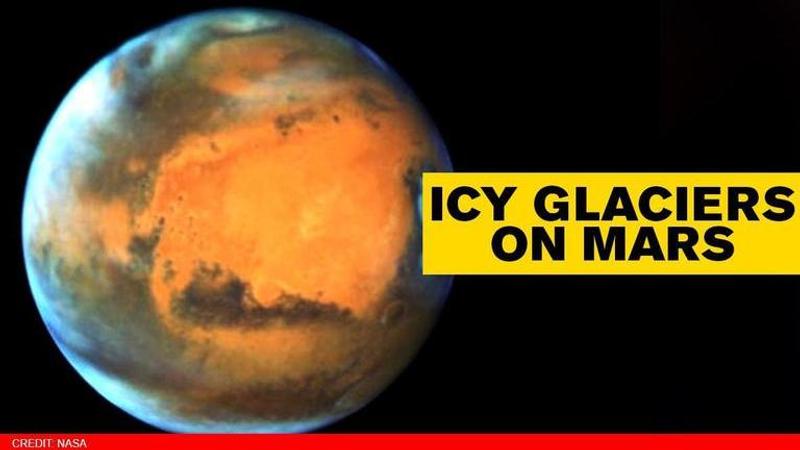Published 10:59 IST, August 4th 2020
Study: Glaciers, not flowing rivers, sculpted Mars’ valleys
Researchers conducted study of Mars’ valley network morphometry, using principal-component-based analysis with physical models of fluvial, groundwater sapping.

Ancient life on Mars could have existed amid the icy glaciers on the Red Planet's valleys and not flowing rivers, new research published in the journal Nature Geoscience on August 3 revealed. As per the study, Mars’ southern highlands are dissected by hundreds of valley networks, which are evidence that water once sculpted the surface, however, climate simulations that predict a cold, icy ancient Mars.
Researchers conducted the study of Mars’ valley network morphometry, using principal-component-based analysis with physical models of fluvial, groundwater sapping, and glacial and subglacial erosion. While it was discovered that the valley formation on the Red Planet involved all of the processes, subglacial and fluvial erosion were the predominant mechanisms on the planet. This proved that there was a presence of subglacial channels and ice sheets among the valley networks. The study, therefore, contradicts the earlier theories about the planet having a warm, wet climate with abundant liquid water.
Researchers from Canada and the United States studied over 10,000 Martian valleys and drew a comparison with the glacial valleys on the Earth. The observation contradicted the hypothesis that rivers, rainfall, and oceans once existed on the red planet. Lead author Anna Grau Galofre, former Ph.D. student in the department of earth, ocean, and atmospheric sciences employed new scientific techniques and found similarities between valleys on Mars with the Canadian Arctic Archipelago.
For the last 40 years, since Mars's valleys were first discovered, the assumption was that rivers once flowed on Mars, eroding and originating all of these valleys, Lead Author Grau Galofre said in the published study. But there are hundreds of valleys on Mars, and they look very different from each other, she added.
[This simulated view shows Mars as it might have appeared during the height of a possible ice age in geologically recent time]
Lead author Galofre said that if one looked at Earth from a satellite "you see a lot of valleys, some of them made by rivers, some made by glaciers, some made by other processes, and each type has a distinctive shape. Mars is similar, in that valleys look very different from each other, suggesting that many processes were at play to carve them."
[Collage showing Mars's Maumee valleys (top half) superimposed with channels on Devon Island in Nunavut (bottom half). The shape of the channels, as well as the overall network, appears almost identical. Image Credit: Anna Grau Galofre/ Nature Geoscience Journal]
It is a "cold, dry, polar desert"
Researchers found the Martian valleys and the subglacial channels on Devon Island in the Canadian Arctic were similar. "Devon Island is one of the best analogs we have for Mars here on Earth—it is a cold, dry, polar desert, and the glaciation is largely cold-based," co-author Gordon Osinski, a professor in Western University's department of earth sciences and Institute for Earth and Space Exploration said. Co-author Mark Jellinek, a professor in UBC's department of earth, ocean, and atmospheric sciences said that these findings and the results demonstrate that only a fraction of valley networks match patterns typical of surface water erosion, which is in marked contrast to the conventional view. He added, “Using the geomorphology of Mars' surface to rigorously reconstruct the character and evolution of the planet in a statistically meaningful way is, frankly, revolutionary.”
[UBC researchers have concluded that early Martian landscape probably looked similar to this image of the Devon ice cap. Credit: Anna Grau Galofre/ Nature Geoscience Journal]
(Images Credit: NASA)
Updated 11:00 IST, August 4th 2020






